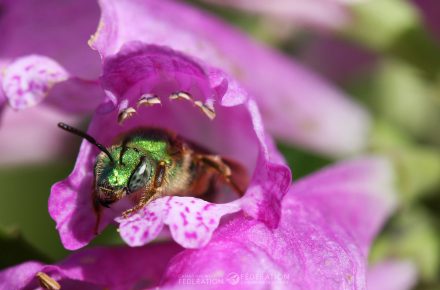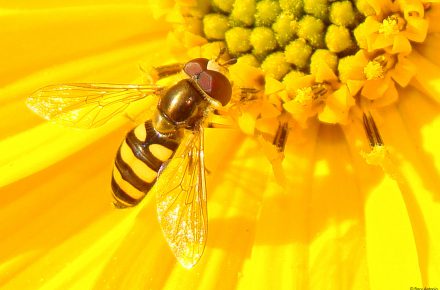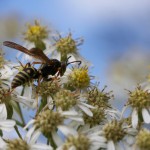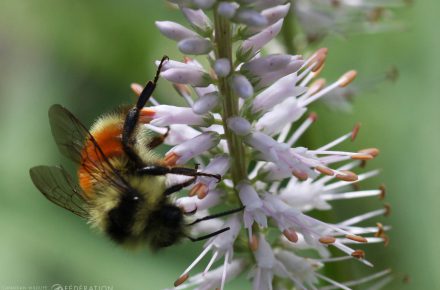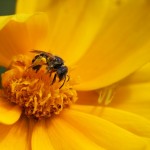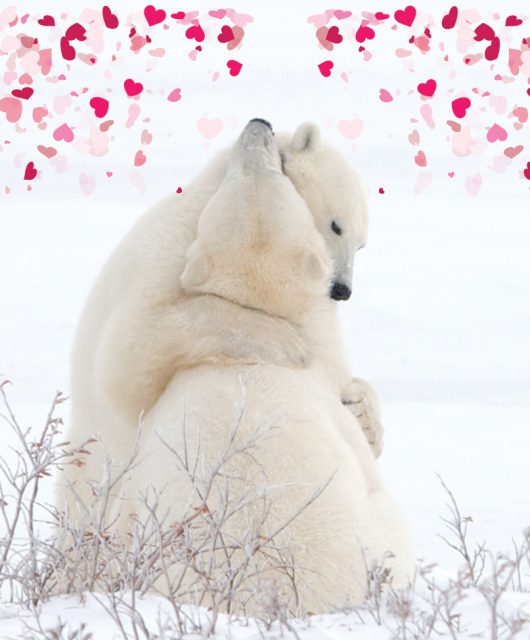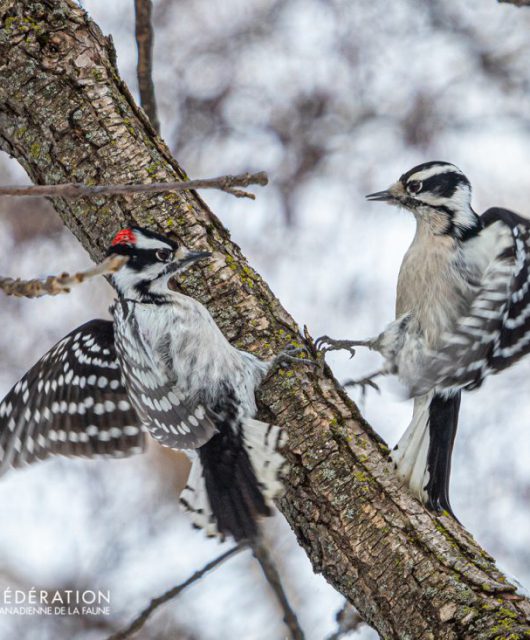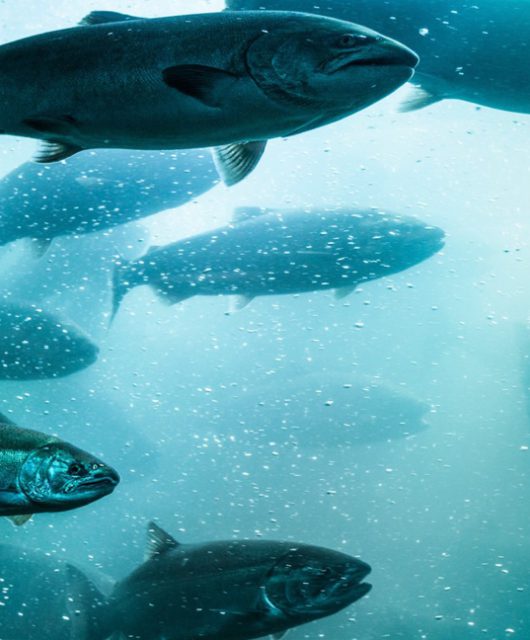I think it’s safe to say that when most of us hear about bees or wasps we think of honey, trying not to get stung or maybe even pollination.
But there is a diverse and remarkable world that awaits to be discovered when it comes to this very large group of insects.
Solitary Species
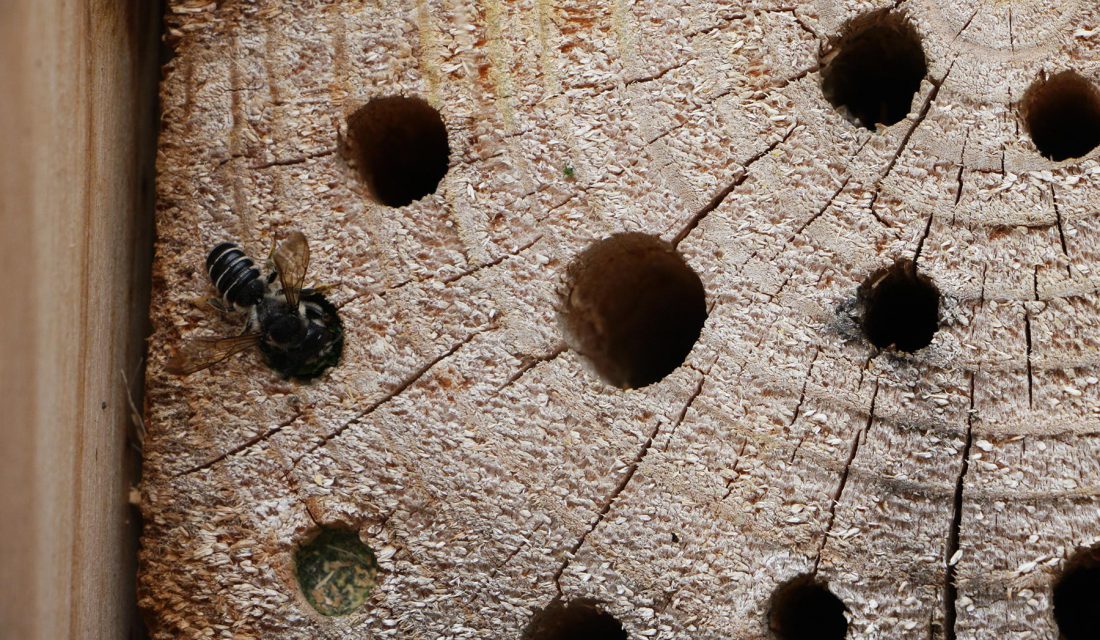
For instance, did you know that Canada has hundreds of species of bees and wasps? Most are secretive in nature and are so docile that they are easy to live alongside as neighbours. They tend to live solitary lives, flying off after laying eggs in prepared cells and provisioning each with some food. Typically, solitary bees leave a mixture of pollen and nectar. Solitary wasps, however, leave immobilized prey including many pest species. This has prompted research into how the agricultural industry can support these beneficial allies.
Solitary bees and wasps make their nests in different places, from the ground to hollow stems of plants to cavities in wood made by other insects.
Social as a Bee
As for our social species that live in a colony that works together, the most common bee people think of are Honey Bees. They are best known for the honey we eat but they are not native and are bred, unlike our wild native species, many of which are more efficient pollinators!
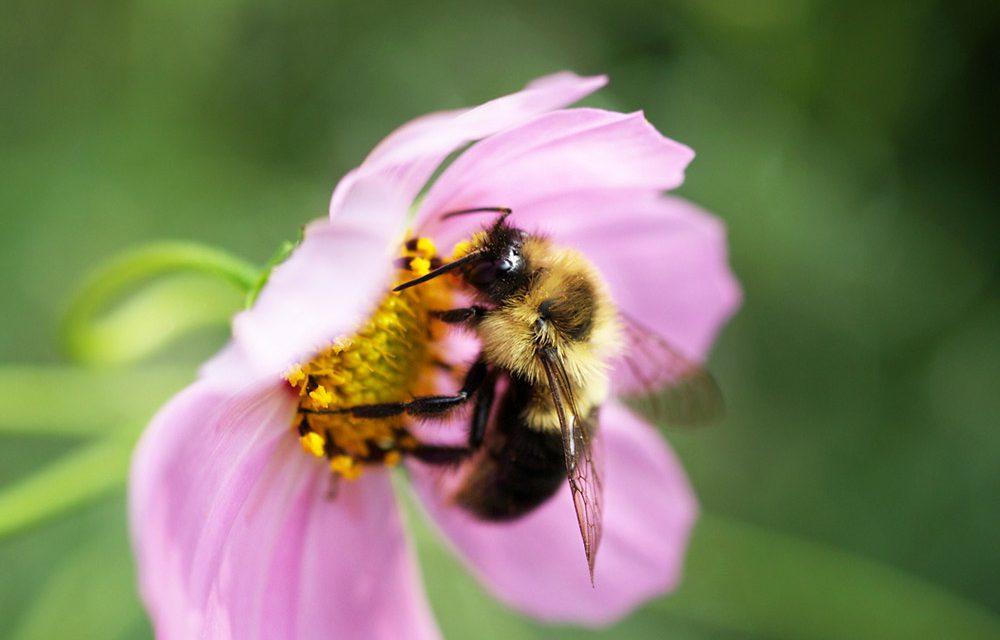 Bumblebees are also social although they have smaller colonies than Honey Bees. But did you know that bumblebees are a group of bees rather than one species? Bumblebees have lots of hairs. This helps them pollinate plants in colder weather. They are often the only bees you’ll see on cool mornings. They are also some of the insects able to buzz-pollinate certain plants like tomatoes. This involves vibrating their bodies powerfully enough to cause the flowers of some species to release its pollen.
Bumblebees are also social although they have smaller colonies than Honey Bees. But did you know that bumblebees are a group of bees rather than one species? Bumblebees have lots of hairs. This helps them pollinate plants in colder weather. They are often the only bees you’ll see on cool mornings. They are also some of the insects able to buzz-pollinate certain plants like tomatoes. This involves vibrating their bodies powerfully enough to cause the flowers of some species to release its pollen.
Bee Diverse
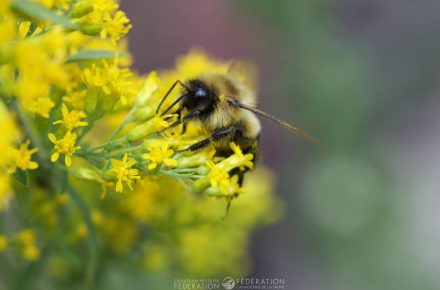
Our bees and wasps come in all sorts of sizes and colours. This can lead to confusion if you don’t see the insect up close and don’t know what to look for. Some bees with their blue-green colouring and small size can be mistaken for flies. Hover flies are probably mistaken the most often for a bee or wasp. This group of flies, also known as Syrphid or Flower Flies, are also one of our most important pollinators in this northern climate.

